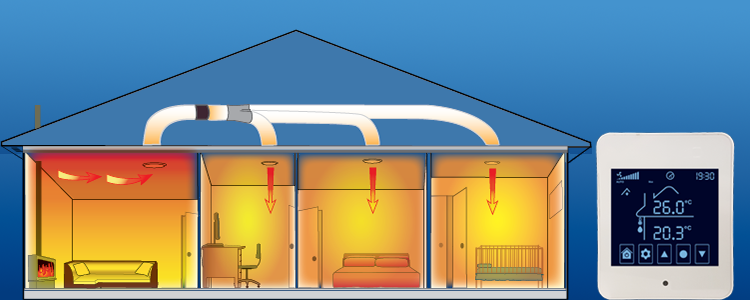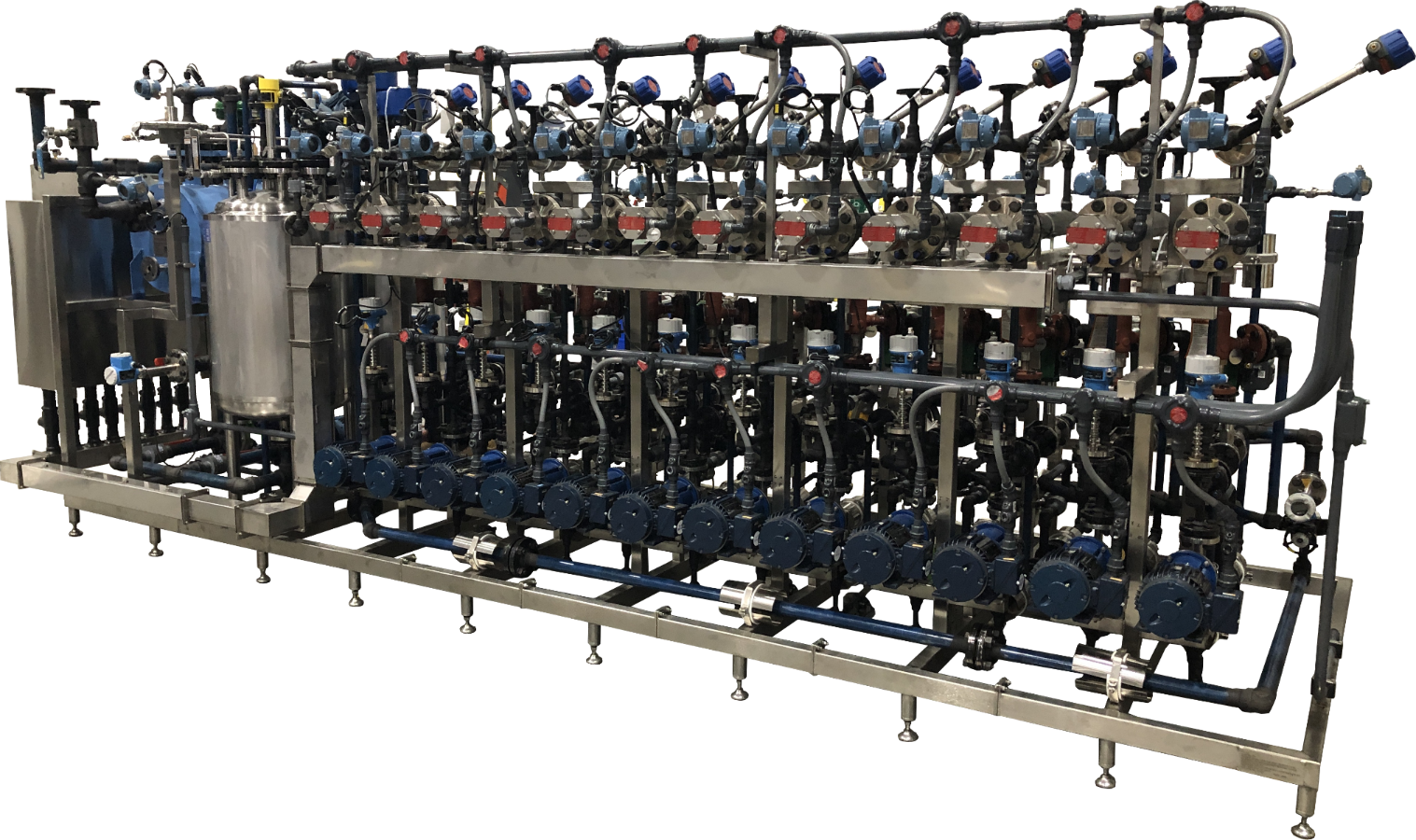Revealing the Potential of DVS Heat Transfer Systems in Cutting-Edge Thermal Management
Wiki Article
The Function of Heat Transfer Equipments in Sustainable Energy Solutions for the Future
Heat transfer systems are essential in the quest for sustainable energy options. They optimize thermal power management, boosting the performance of sustainable modern technologies. By employing devices like radiation, conduction, and convection, these systems lessen energy losses. Their role in solar thermal and geothermal applications is specifically considerable. As innovations arise, the possibility for more advancements elevates important questions concerning future power methods. What developments will shape the landscape of sustainable energy?Comprehending Heat Transfer Equipments

The Relevance of Thermal Energy Monitoring
Effective thermal power administration is important for making best use of energy performance and decreasing waste in various systems. By managing temperature level and maximizing Heat transfer processes, organizations can significantly reduce power intake and functional expenses. Efficient management involves the execution of innovative modern technologies and techniques that keep an eye on and manage thermal problems within systems, ensuring that energy resources are made use of efficiently. Furthermore, appropriate thermal power management adds to minimizing greenhouse gas exhausts, straightening with international sustainability objectives. It additionally improves system dependability and efficiency, bring about boosted item top quality and longer equipment lifespan. Inevitably, prioritizing thermal power management is an essential action in the direction of creating much more sustainable power services and promoting an accountable technique to energy intake in property and commercial contexts.Applications of Heat Transfer in Renewable Resource
While various renewable resource resources guarantee sustainability, the effective application of Heat transfer plays an important function in their efficiency. In wind energy systems, Heat transfer is made use of for generator part air conditioning, enhancing efficiency and durability. Geothermal energy relies on efficient Heat exchange between the planet's subsurface and the liquid circulating in the system, optimizing energy removal. Biomass power procedures additionally profit from Heat transfer, as it assists in converting organic products into functional fuel through pyrolysis and gasification. Furthermore, in hydropower, preserving suitable temperatures in tanks can boost power output. Each of these applications shows the important relevance of Heat transfer systems in enhancing eco-friendly power technologies, eventually adding to a more lasting energy future.Enhancing Solar Thermal Power Effectiveness
As solar thermal power systems continue to evolve, improving their effectiveness has come to be crucial for optimizing energy output. Advances in Heat transfer technologies, such as enhanced thermal storage products and ingenious Heat exchangers, play a significant duty in boosting performance. By using sophisticated materials that have exceptional thermal conductivity, systems can transfer and capture Heat better. In addition, incorporating tracking systems that comply with the sunlight's course assurances that collection agencies receive ideal solar direct exposure throughout the day. Using nanotechnology in solar absorbers can better enhance power absorption prices. Integrating computerized control systems helps manage and regulate temperature levels power distribution effectively, leading to reduced losses and improved total system efficiency. These enhancements lead the means for even more sustainable solar thermal power services in the future.Geothermal Heating: A Lasting Remedy
Geothermal home heating provides a practical alternative for lasting power, providing considerable ecological benefits with minimized greenhouse gas discharges. Its performance and cost-effectiveness make it an eye-catching choice to typical heating unit. However, obstacles associated to implementation must be dealt with to optimize its possible influence.Environmental Advantages of Geothermal
Although conventional home heating methods add considerably to greenhouse gas emissions, geothermal heating offers a compelling choice that minimizes ecological effect. By utilizing the Earth's interior Heat, geothermal systems utilize a renewable resource resource, significantly minimizing dependence on nonrenewable fuel sources. This technique creates marginal carbon emissions, making it a cleaner choice for property and commercial heating. Additionally, geothermal systems advertise energy efficiency, as they call for less power compared to traditional heater. DVS Heat Transfer Systems. The usage of geothermal power also helps in decreasing air pollution, improving local air you can try this out top quality and public health and wellness. As a sustainable service, geothermal home heating supports environment adjustment reduction efforts, positioning itself as a necessary element in the change in the direction of a greener futurePerformance and Cost-Effectiveness
Exactly how does geothermal heating determine up in terms of effectiveness and cost-effectiveness compared to typical heating unit? Geothermal heating demonstrates remarkable efficiency, typically achieving a coefficient of efficiency (POLICE OFFICER) of 3 to 5, meaning it produces three to five devices of Heat for every device of electricity eaten. This performance equates into lower operating expense, click now especially in regions with stable geothermal sources. Preliminary installation prices can be greater than conventional systems; however, lasting financial savings on power expenses and reduced upkeep expenditures can offset these in advance financial investments. In addition, numerous governments incentivize geothermal systems via discounts and tax credits, improving their cost-effectiveness. In general, geothermal home heating arises as a economically practical and lasting alternative to more conventional heating options.Implementation Obstacles and Solutions
Many obstacles can hamper the widespread implementation of geothermal heating systems, despite their clear benefits as a lasting energy solution. High preliminary setup expenses typically prevent homeowners and investors, making financing a significant obstacle. In addition, the geographical limitations of suitable geothermal sites restrict ease of access in certain regions. Regional laws and allowing processes can likewise complicate project development, bring about hold-ups. Moreover, public understanding and understanding of geothermal systems continue to be low, impeding acceptance. To deal with these obstacles, targeted education and learning projects can improve public understanding, while federal government motivations can reduce monetary concerns. Working together with local authorities to simplify laws may help with smoother task approvals, ultimately promoting the adoption of geothermal heating as a sensible, sustainable power alternative.Advancements in Heat Transfer Technologies
Innovations in Heat transfer modern technologies play a crucial duty in boosting power effectiveness and sustainability. Advanced Heat exchangers and phase modification products are at the forefront of these advancements, using substantial enhancements in thermal administration. These innovations not just enhance energy use yet additionally contribute to minimizing ecological impact in various applications.Advanced Heat Exchangers
Advanced Heat exchangers play an essential duty in enhancing energy efficiency throughout numerous applications pop over to this web-site in sustainable power solutions. These gadgets facilitate the transfer of Heat in between two or even more fluids, significantly decreasing power consumption in processes such as commercial heating, air conditioning, and power generation. Advancements in products and style, such as using nanofluids and small setups, have brought about enhanced thermal performance and lowered size requirements. In addition, improvements in digital tracking and control systems permit for optimized operation, additional raising efficiency. By reducing waste Heat and making the most of energy recuperation, advanced Heat exchangers add to lower carbon impacts and sustain the shift towards eco-friendly technologies. Their proceeded growth is important for attaining global energy sustainability objectives.
Stage Modification Products
The integration of stage modification products (PCMs) right into Heat transfer innovations stands for a significant advancement in energy administration and efficiency. PCMs take in and launch thermal power throughout their phase changes, allowing reliable temperature policy in building products and power systems. By keeping excess Heat during height durations and launching it when need rises, PCMs add to fill changing and power preservation - DVS Heat Transfer Systems. This capacity enhances the performance of renewable resource systems, particularly in solar thermal applications. Additionally, PCMs can improve the thermal comfort of indoor environments, decreasing reliance on conventional home heating and cooling down approaches. As developments in PCM formulations remain to arise, their duty in sustainable energy options is poised to expand, offering promising avenues for future research and application
Future Leads for Heat Transfer in Lasting Power
As the need for lasting energy remedies remains to climb, the duty of Heat transfer systems is ending up being significantly crucial fit future innovations. Technologies in styles and products are anticipated to boost efficiency in Heat transfer, minimizing power losses in numerous applications. The integration of advanced thermal storage systems, such as phase adjustment products and thermochemical storage space, will certainly make it possible for better management of energy resources. Research into nanofluids and biomimetic Heat exchangers might better optimize thermal efficiency. Moreover, the fostering of clever innovations will enable real-time surveillance and adaptive control of Heat transfer processes. These developments are poised to significantly contribute to the overall performance and sustainability of energy systems, paving the way for an extra energy-efficient future.Regularly Asked Inquiries
Exactly How Can Individuals Implement Heat Transfer Solution in the house?

People can execute Heat transfer systems in the house by setting up energy-efficient home appliances, using radiant home heating, and optimizing insulation. These actions improve energy performance, decrease costs, and promote lasting methods in residential environments.

What Are the Costs Connected With Setting Up Heat Transfer Systems?
The prices related to setting up Heat transfer systems vary widely, generally including devices, setup labor, and maintenance. Aspects such as system type, home size, and local policies substantially affect the total expense entailed.Exist Government Rewards for Heat Transfer System Installations?
Federal government motivations for Heat transfer system installations vary by area and can consist of tax obligation credit ratings, gives, and rebates. These financial advantages aim to motivate adoption, ultimately promoting energy efficiency and lowering environmental influence within neighborhoods.Just How Do Heat Transfer Equipments Impact Power Costs?
Heat transfer systems especially influence energy costs by optimizing power efficiency. By boosting the transfer of Heat, these systems decrease energy intake, resulting in reduced utility prices and creating a much more sustainable strategy to energy administration.What Upkeep Is Required for Heat Transfer Equipments?
Maintenance for Heat transfer systems consists of normal examinations, cleansing of components, checking liquid levels, making certain appropriate insulation, and changing worn parts. These tasks aid keep efficiency, avoid breakdowns, and extend the system's functional life-span.These systems help with the motion of thermal power from one medium to another, allowing the transfer of Heat for cooling, energy, or heating generation objectives. Geothermal energy relies on efficient Heat exchange in between the planet's subsurface and the liquid distributing in the system, optimizing power removal. Additionally, geothermal systems promote energy performance, as they need much less energy compared to traditional heating systems. Advanced Heat exchangers play a necessary duty in boosting power efficiency across different applications in sustainable energy remedies. Heat transfer systems significantly influence power bills by maximizing energy efficiency.
Report this wiki page